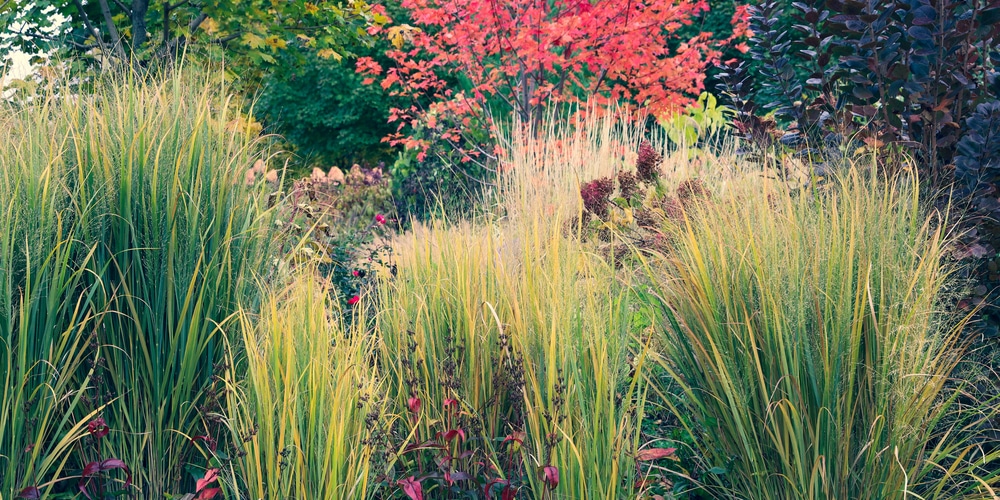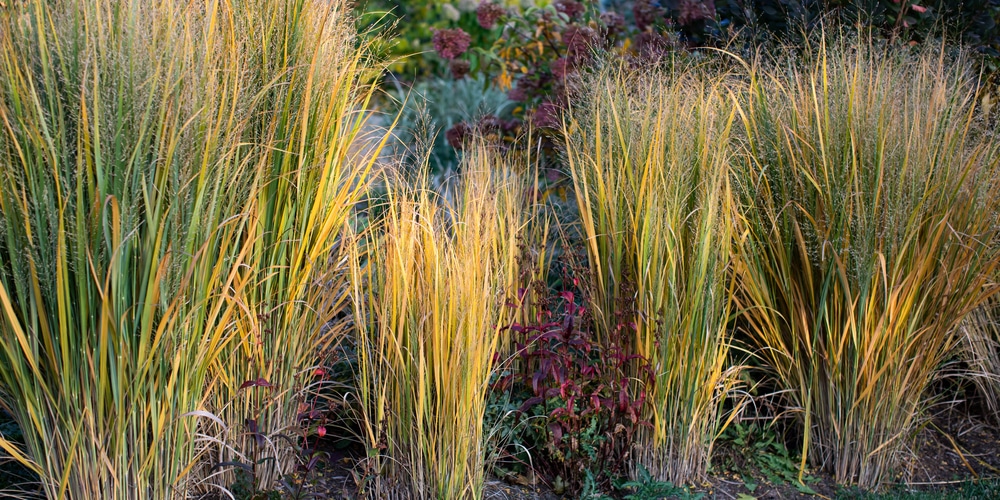Northwind switchgrass is a warm-season prairie grass that’s often seeded in spring and can be grown successfully throughout most regions in USDA climate zones 3 to 9. It’s a beautiful deciduous plant with blue-green foliage that becomes yellow or tan during winter dormancy.
Northwind provides excellent wildlife cover and has the potential for soil conservation as it can help prevent erosion. This ornamental grass is fast-growing but takes between two and four years to reach its full height. Switchgrass is also long-lasting and can live for 15 years or more. Let’s look at how to grow and care for Northwind Switch Grass.
What is Northwind Switchgrass?
Northwind Switchgrass has the botanical name Panicum virgatum and is a warm-season perennial bunchgrass native to central and eastern North America. It’s part of the Poaceae family which consists of hundreds of grass species. These plants grow 4 to 6 feet high and has a spread of 2 to 3 feet. The plant also has a deep root system that can reach up to 4 feet depth.
Northwind switchgrass has long slender stems and leaves that are olive-green to blue-green in color depending on the season (If you’d prefer red, check out Hot Rod Switchgrass). The foliage is flat and narrowly lanceolate. The plants also have large finely branched flowers with small spikelets in late summer or fall. The golden flowers and seed heads look like plumes and are very beautiful. When the weather gets colder, the flower heads and the foliage starts to turn yellow or tan. These plants look excellent year-round and add color to a winter garden.
In addition, the rhizomes of switchgrass allow for rapid regrowth after disturbance such as fire or grazing, making it suitable for land reclamation where other species have been overgrazed.
How to Care for Northwind Switch Grass?
Northwind switchgrass is planted as seed and requires well-drained soil. As with most species of switchgrass, Northwind grows best in full sun but will tolerate light shade. This warm-season perennial is typically planted in spring or fall. It can be used successfully throughout most regions of USDA Climate Zones 3 through 9. Here are some tips to help you grow and care for Northwind Switchgrass.
Watering requirements
Northwind switchgrass is pretty drought-resistant but does best when moderately watered. When well-watered, this species will grow rapidly, even during cooler months. Too little water and growth will halt, and leaves will turn brown and die as a protective measure against further water stress.
Sunlight needs
Northwind switchgrass grows best in full sun but will tolerate light shade. It can be planted in a flower border or grown in a container on a patio. When grown in too much shade the plants are likely to look leggy and become discolored.
Soil cultivation
Northwind is a vigorous grower and will often choke out weeds naturally. However, hand weeding may be required in the beginning to maintain high-quality habitat. Once established this species can help suppress weed growth as it quickly out-competes aggressive vegetation for sun, water, nutrients, and space.
Switchgrass grows best in soils with a pH between 5.5 and 7.0 but tolerates a range from 4.8 to 8.1. The soil should also be well-drained to prevent root rot or other fungal infections that could occur with Northwind grass under moist conditions for long periods. These plants grow well in various soil that is clay-like, loamy, chalk, or sandy. They are very adaptable and can cope with neutral, acidic, or alkaline soils.
Fertilization
Northwind switchgrass typically requires an application of fertilizer once or twice during the growing season (April through September). It’s best to apply a good quality fertilizer in late spring and another in mid-July. Always follow the instruction on the label when using fertilizers.
Diseases and Pests
Northwind switchgrass is known for its excellent resistance to disease and insects. Diseases are easily prevented by avoiding excess moisture around plant crowns for extended periods. If the crown becomes infected, the grass will die. The most common diseases include powdery mildew and rust.
Northwind switchgrass is also deer resistant and doesn’t often suffer from insect infestation.
Temperature
Northwind switchgrass is very hardy and can cope with both hot and cold weather conditions. In areas where there is a risk of frost or snow cover, you may like to put some mulch around your plant in the fall. Use organic material such as straw to keep the plant warm. This transition will allow your plants to harden off before cold weather sets in. It’s best to grow northwind switchgrass in a sheltered location away from strong winds.
Propagation
Northwind switchgrass is propagated by seed. Planting a mixture of seeds with regionally appropriate annual and perennial wildflowers will increase native insect, bird, and pollinator activity. You can collect seed heads from your plant in the late fall or winter and dry them out. They can then be planted the following spring when temperatures start to increase. Remember that your seeds will need enough sunlight and warmth to germinate successfully. You’ll also need to keep the ground moist to encourage growth.
It’s also possible to propagate mature plants by division in the early spring. Switchgrass grows from rhizomes which can be separated to form a new plant. Only use this technique if you have a large mature plant. Keep your new plant in a sunny location and water regularly until it has successfully established itself.
Pruning
Most often, Northwind switchgrass is left untrimmed. However, the species can also be cut back to maintain the desired height and appearance. You can remove dead or damaged leaves during the winter.
Conclusion
Switchgrass can be used as animal feed and is also commonly used in yards and landscaping projects as an ornamental grass. Other uses include erosion control, weed suppression, and shade for livestock by creating a windbreak. It’s also used for bank stabilization along streams.
Northwind switchgrass does require moderate watering to thrive, and the number one concern of this grass is drought. If well watered, this species grows rapidly, even during the summer months.

